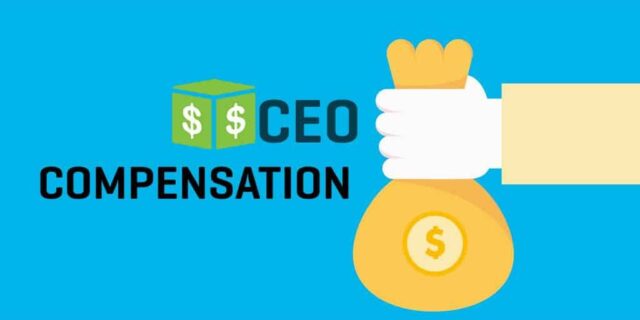
Finding the right CEO is one of the most critical decisions any business will face. It shapes long-term direction, investor confidence, internal culture, and market position. One wrong move can derail progress. One right hire can open new markets, partnerships, and profitability.
Whether your company is replacing a founder, scaling rapidly, or repositioning for acquisition, the CEO search process cannot be treated like a regular hire. It demands rigor, precision, and deep insight.
Key Highlights
- A CEO search requires a different strategy than regular executive hiring.
- Poor CEO selection often leads to stagnation or internal misalignment.
- Founders must detach emotionally to focus on what the business truly needs.
- Specialist recruiters reduce risk and speed up the hiring process.
- Cultural fit is just as critical as track record and credentials.
- A rushed CEO search often leads to expensive course corrections.
Why CEO Searches Fail – And How to Avoid It

Most failed CEO placements trace back to one root cause: lack of clarity. Companies often begin the search process without defining the leadership profile that fits the next chapter of the business. They either over-prioritize charisma or chase resumes with big names and overlook real alignment with strategy.
Poor planning leads to one of three outcomes:
- The company hires too fast and regrets it.
- The board interferes too much, creating confusion and delays.
- The search drags on with no resolution, draining internal resources.
Start by answering these questions with brutal honesty:
- What challenges must the next CEO solve in the first 12 months?
- What leadership style fits the current team and market?
- What gaps exist on the board or executive team that the CEO must complement?
Avoid wish lists. Focus on hard needs. Define must-have qualities, not nice-to-haves. Be specific about industry knowledge, investor relations experience, or crisis management ability.
One effective way to align on profile early is to work with a dedicated CEO recruitment partner.
Exec Capital offers a tailored, hands-on CEO recruitment process designed for high-growth companies, scaleups, and firms undergoing transition. Their recruiters understand both the operational and emotional stakes of a CEO hire because they’ve walked in both shoes—as entrepreneurs and as advisors. Working with a boutique agency reduces noise and puts quality, strategy, and confidentiality at the core of the process.
Involve the Right People, But Not Too Many

Leadership decisions should not be made in a vacuum, but they also cannot be made by committee. Too many inputs will slow momentum, confuse messaging, and increase risk of political friction. Build a focused CEO search committee with a clear mandate.
The ideal composition includes:
- A board member with deep business strategy knowledge.
- The head of HR or talent with experience in executive hiring.
- One operational leader who understands day-to-day challenges.
- An outside advisor or investor with market insight.
Each member should have equal access to candidates but defined responsibilities in the process—some should focus on business alignment, others on cultural chemistry. Choose members who can handle sensitive discussions and keep confidential information secure.
Avoid giving final say to people not involved in early stages of evaluation. That leads to last-minute vetoes or reversals. Set expectations early and document criteria before any interviews begin.
Search Timeline – Fast, but Not Rushed

The average CEO search lasts 4–6 months. That’s enough time to get alignment, source high-quality candidates, and conduct proper evaluation rounds. Longer than that, and top talent loses interest. Shorter than 60 days, and due diligence becomes weak.
Break the search into four phases:
- Alignment Phase (2–3 weeks)
Define CEO profile. Build internal alignment. Appoint the core search team. - Sourcing Phase (4–6 weeks)
Leverage recruiter networks, board contacts, and passive search. Screen candidates. Validate interest. - Evaluation Phase (4–6 weeks)
First- and second-round interviews. Case assessments. Culture fit interviews. Reference checks. - Offer & Transition Phase (2–3 weeks)
Negotiate terms. Outline a 90-day transition plan. Communicate clearly to the team.
Urgency does not justify chaos. Set deadlines, but don’t skip steps.
Traits That Matter – What to Look for in a CEO

There is no perfect CEO formula. Each company’s needs differ by stage, industry, and goals. Still, the best CEO candidates tend to demonstrate five core traits that indicate strong performance across contexts.
Strategic Pattern Recognition
They spot opportunities and threats early. They think 12–36 months ahead without losing focus on near-term priorities.
Operational Discipline
They lead teams and budgets with clarity. They build dashboards, drive accountability, and improve decision speed.
Investor Fluency
They speak the language of capital. They know how to manage expectations and raise strategically.
People Magnetism
They attract and retain talent. People follow them. Teams stay focused, motivated, and aligned.
Self-Awareness
They know their limits. They seek feedback. They build leadership teams that fill their blind spots.
Avoid candidates who only excel in interviews. Probe with real-world scenarios, 360 feedback from former colleagues, and measurable outcomes in similar company stages.
Founder Transition – When It’s Time to Step Aside
For many startups, the CEO search begins with a difficult conversation: the founder is no longer the best person for the job. That transition, if handled poorly, can fracture the company.
The founder must be honest about personal goals, skill gaps, and burnout. Investors must balance support with urgency. The board must communicate clearly and protect business continuity.
If the founder will stay in a new role, define that early. Clarify how decision rights shift. Avoid vague “co-CEO” labels or undefined advisor roles. Clean transitions build trust.
Letting go is hard. But if done right, it unlocks the next stage of growth.
Compensation, Equity, and Incentives
CEO candidates often care more about upside than salary. Align incentives with clear KPIs—growth, profitability, team retention, or exit targets.
Best practices for CEO compensation:

- Offer base salary in the 50th–75th percentile of the market.
- Include equity with clear vesting timelines and milestone-based acceleration.
- Tie bonuses to measurable goals agreed in advance.
Be transparent. Set expectations on future fundraising or dilution. Avoid surprises.
After the Hire – What Comes Next?
The first 90 days set the tone. A new CEO will watch everything: culture, systems, decision flow, investor dynamics. So will the team.
Create space for them to listen, observe, and diagnose. Avoid overload. Set up a structured onboarding process, with scheduled touchpoints and aligned messaging to the wider team.
Support the CEO post-hire with:
- A clear 90-day plan with shared goals.
- Regular check-ins with the board or founder.
- Internal messaging that reinforces trust and authority.
Companies that fail to onboard CEOs properly often repeat the search within 18 months. Don’t confuse hire date with success date. The work starts after the signature.
Final Thoughts
A CEO search is not just another hire. It’s a high-stakes inflection point. Done right, it transforms a company’s trajectory. Done wrong, it sets the business back years.
Be intentional. Be honest. Move with urgency but not recklessness.
And don’t go at it alone. Use expert recruiters, align internal voices, and prioritize long-term leadership over short-term charisma. A great CEO doesn’t just manage. A great CEO multiplies everything.







